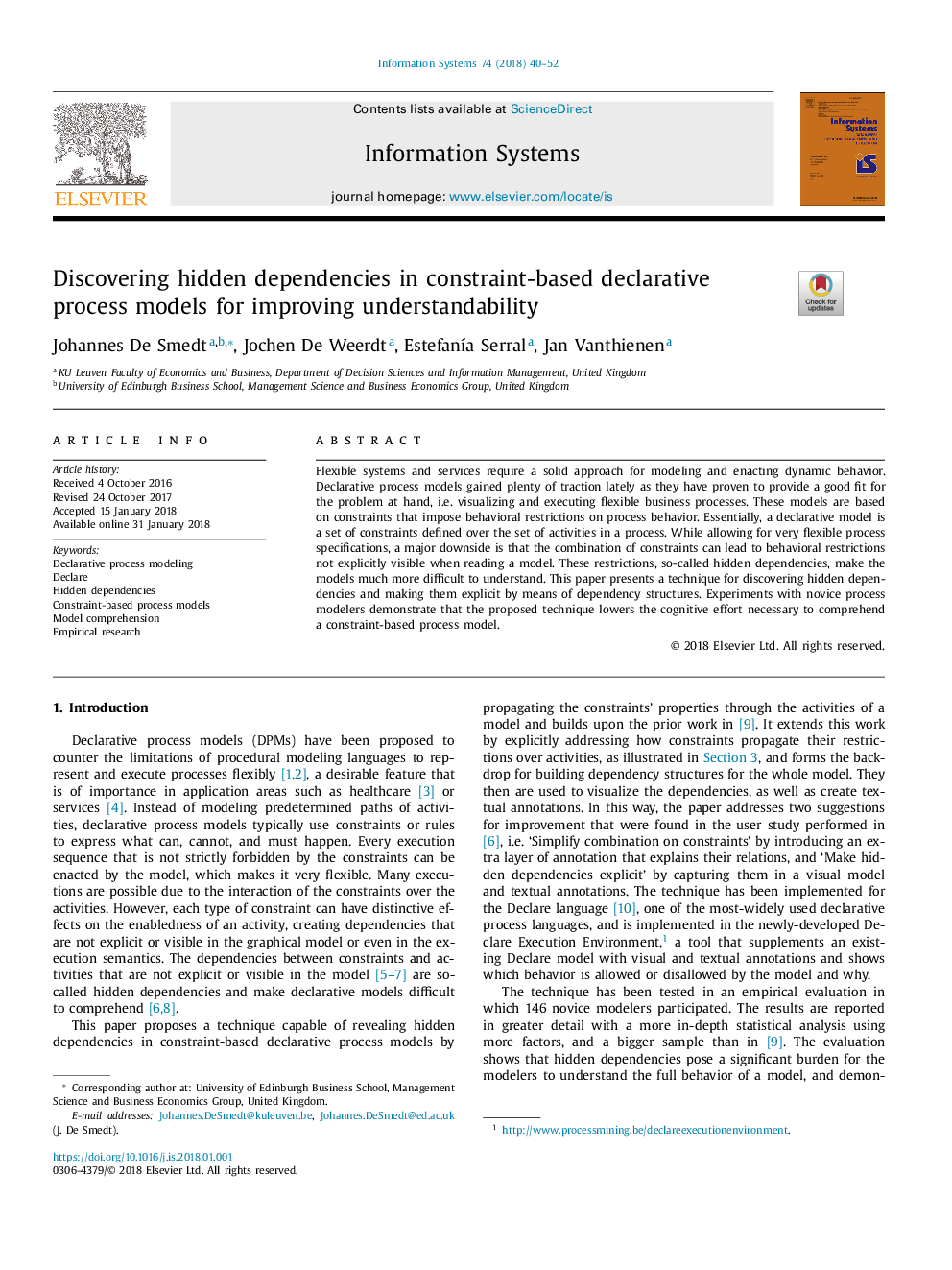| Article ID | Journal | Published Year | Pages | File Type |
|---|---|---|---|---|
| 6858614 | Information Systems | 2018 | 13 Pages |
Abstract
Flexible systems and services require a solid approach for modeling and enacting dynamic behavior. Declarative process models gained plenty of traction lately as they have proven to provide a good fit for the problem at hand, i.e. visualizing and executing flexible business processes. These models are based on constraints that impose behavioral restrictions on process behavior. Essentially, a declarative model is a set of constraints defined over the set of activities in a process. While allowing for very flexible process specifications, a major downside is that the combination of constraints can lead to behavioral restrictions not explicitly visible when reading a model. These restrictions, so-called hidden dependencies, make the models much more difficult to understand. This paper presents a technique for discovering hidden dependencies and making them explicit by means of dependency structures. Experiments with novice process modelers demonstrate that the proposed technique lowers the cognitive effort necessary to comprehend a constraint-based process model.
Related Topics
Physical Sciences and Engineering
Computer Science
Artificial Intelligence
Authors
Johannes De Smedt, Jochen De Weerdt, EstefanÃa Serral, Jan Vanthienen,
